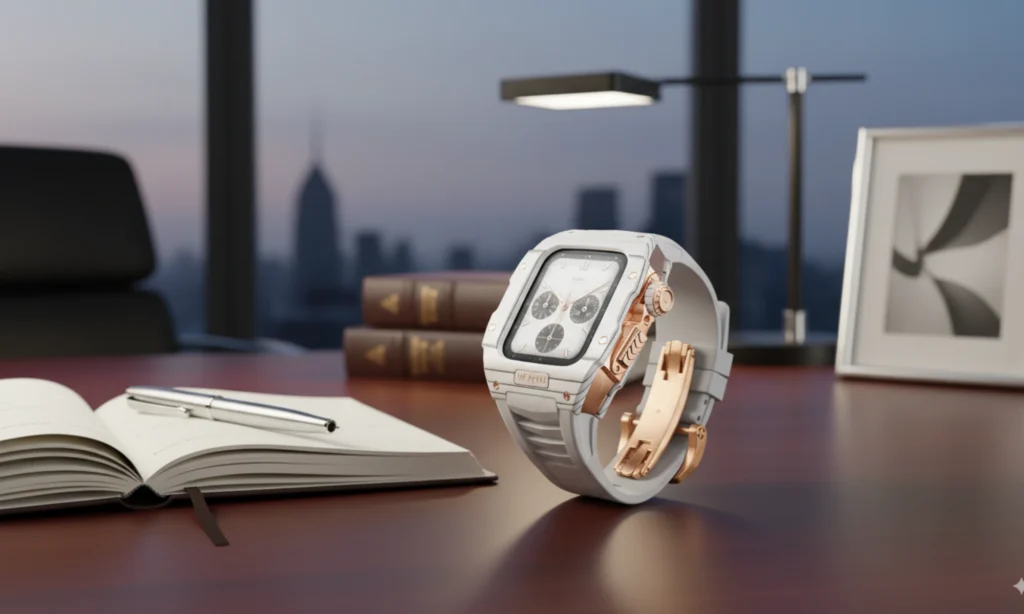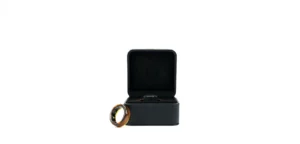Ever marvel at how your smartwatch effortlessly displays notifications from your phone, or how your fitness tracker seems to magically upload your daily activity? In 2025, the seamless integration of your wearable devices is no longer a novelty, but a crucial element to truly harness their power. This guide is your definitive answer to the burning question: How do wearable devices connect? We'll demystify the invisible threads that link your favorite gadgets, providing you with clear, actionable insights tailored for the US market. Prepare to understand the fundamental communication methods, from the ubiquitous Bluetooth to emerging technologies, and learn practical troubleshooting tips to ensure your wearable experience is consistently smooth. By the end of this guide, you'll be equipped with the knowledge to optimize every connection, making your wearable technology work harder and smarter for you.
Understanding the Core Connection: Bluetooth Low Energy (BLE)
When you consider how do wearable devices connect to the rest of your digital life, the answer almost invariably points to a specific, power-efficient wireless technology. Wearables, from smartwatches and fitness trackers to wireless earbuds, are designed for constant use, often on a single charge for days or even weeks. This necessitates a communication protocol that prioritizes minimal power consumption above all else. This is where Bluetooth Low Energy (BLE) emerges as the undisputed champion.
What is Bluetooth Low Energy (BLE) and Why It Matters for Wearables
Bluetooth Low Energy (BLE) is a specialized variant of Bluetooth technology engineered from the ground up for short-range communication with extremely low power requirements. Unlike its predecessor, which was designed for continuous, high-bandwidth data streaming, BLE is optimized for infrequent, small data packets. This makes it the perfect choice for battery-powered devices like wearables. The primary goal of BLE is to enable seamless connectivity with smartphones and other host devices while drawing negligible power. This is crucial because the very nature of wearables means they are often worn for extended periods, and frequent recharging would be a significant inconvenience. Consequently, wearables primarily use Bluetooth Low Energy (BLE) to connect with smartphones, prioritizing minimal power usage.
How BLE Enables Efficient Communication
The efficiency of BLE lies in its design philosophy. It operates in bursts, sending data and then quickly returning to a low-power sleep state. This “connect-send-disconnect” model drastically reduces the energy expenditure compared to maintaining a constant connection. For instance, a fitness tracker might send your daily step count or heart rate data to your smartphone a few times an hour, rather than maintaining a continuous link. This is a fundamental aspect of how do wearable devices connect without draining their batteries prematurely. This technology is specifically designed for short-range communication with low power needs, perfect for battery-powered devices. Imagine a scenario where your smartwatch needs to sync with your phone; BLE facilitates this with a quick, energy-sipping exchange of information.
The Role of Bluetooth SIG in Ensuring Compatibility
The widespread adoption and effectiveness of BLE in wearables are underpinned by the standards set by the Bluetooth Special Interest Group (SIG). This organization develops and manages the Bluetooth specifications, ensuring interoperability between devices from different manufacturers. When a wearable device is designed to use BLE, it must adhere to these specifications. This rigorous certification process means that your wearable and your phone can communicate effectively, regardless of brand, after passing the necessary Bluetooth SIG certification. This ensures a consistent and reliable user experience when you consider how do wearable devices connect, making the technology accessible and dependable for millions of users worldwide.
In conclusion, the answer to how do wearable devices connect is predominantly through Bluetooth Low Energy (BLE). Its power efficiency, designed for intermittent data transfer, is the cornerstone of the wearable revolution, allowing these devices to remain functional and connected for extended periods. The Bluetooth SIG's role in standardizing this technology guarantees that the connection between your wearable and your smartphone is robust and seamless, enabling the rich ecosystem of smart devices we rely on today.
The Step-by-Step Pairing Process in 2025
Connecting your new wearable device to your smartphone is the gateway to unlocking its full potential, from tracking your fitness goals to receiving important notifications. In 2025, the process remains intuitive and streamlined, designed for ease of use. Understanding how do wearable devices connect is fundamental, and this section will guide you through each essential step, ensuring a successful and secure link between your devices.
Enabling Bluetooth on Your Smartphone: A Quick Check
The foundational requirement for most wearable-to-smartphone connections is Bluetooth technology. Before you even begin looking for your wearable, it’s crucial to ensure Bluetooth is turned ON in your smartphone's settings. This is a quick and simple check. Most smartphones have a dedicated Bluetooth toggle readily accessible through the quick settings menu (often by swiping down from the top of the screen) or within the main ‘Settings' application. For instance, on both iOS and Android devices, you'll find Bluetooth listed prominently under ‘Connections' or ‘Network & Internet'. Without an active Bluetooth signal from your phone, your wearable will simply not be discoverable.
Putting Your Wearable into Discoverable (Pairing) Mode
Once your smartphone is ready, the next critical step is to make your wearable device visible for connection. This involves activating pairing mode on your wearable – check your device's manual for specific steps. The exact procedure varies significantly between manufacturers and device types. For example, a smartwatch might require you to navigate through its settings menu to a ‘Bluetooth' or ‘Connections' option and then select ‘Pair New Device'. A fitness tracker might involve holding down a specific button until an indicator light flashes, signifying it's in pairing mode. Always refer to the accompanying user manual or the manufacturer's website for precise instructions tailored to your specific model. This ensures you're not missing a crucial step unique to your device.
Searching and Selecting Your Device
With both devices primed, the connection process moves to your smartphone. On your phone, scan for nearby devices and select your wearable's name from the list. After enabling Bluetooth and putting your wearable into pairing mode, your smartphone will begin searching for available Bluetooth signals. This scan typically happens automatically when you're in the Bluetooth settings menu, or you might need to tap a ‘Scan' or ‘Refresh' button. You will then see a list of discovered devices. Your wearable should appear with its designated name (e.g., “Galaxy Watch 5,” “Fitbit Charge 6”). Tap on your wearable's name to initiate the pairing request. This is where the initial handshake between your devices begins.
Confirming the Connection: Codes and Permissions
The final stage ensures the security and integrity of the connection. Finally, confirm any pairing codes displayed on both devices to establish a secure link. In most modern pairings, you'll see a numerical code displayed on both your smartphone screen and your wearable's display. These codes should match. If they do, you'll be prompted to confirm the pairing on both devices. Accepting this confirmation establishes a secure, encrypted connection. You might also be asked to grant specific permissions, such as access to contacts, location services, or notifications, which are essential for the wearable to function correctly with its companion app. This multi-factor confirmation is a key part of understanding how do wearable devices connect securely in 2025.
Common Use Cases and Companion Apps in the US Market
– Fitness trackers sync vital data like steps, heart rate, and sleep patterns to apps like Fitbit or Garmin Connect.
– Smartwatches offer advanced connectivity, allowing notifications, calls, and app usage directly from your wrist.
– Companion apps are essential for managing your wearable, viewing historical data, and customizing settings.
– The US market sees strong growth driven by health features and increased consumer interest in smartwatches.
Troubleshooting Common Connection Issues in 2025
– Ensure your wearable is in pairing mode and within close range (approx. 30 feet) of your phone.
– If the connection drops, try toggling Bluetooth off and on, or restarting both devices.
– Force close and reopen the companion app; ensure it's updated to the latest version.
– Always try restarting both devices before contacting customer support.
Advanced Connectivity and Future Trends for Wearables
– Future wearables will increasingly feature Wi-Fi and cellular radios for greater independence.
– Devices like smartwatches with cellular plans can make calls or stream music without a nearby phone.
– Smart rings are emerging as convenient tools for payments and access control via NFC.
– Expect seamless multi-device connectivity and more integrated functionalities in 2025.
Conclusion: Seamlessly Connecting Your Wearable Future
As we navigate the increasingly interconnected landscape of personal technology in 2025, understanding how do wearable devices connect? is no longer a technical curiosity but a fundamental aspect of unlocking their full potential. We've explored how the ubiquitous and efficient Bluetooth Low Energy (BLE) serves as the primary conduit, facilitating a remarkably straightforward pairing process that bridges your wearable to your smartphone. This connection is the gateway to the rich data, personalized insights, and enhanced functionality that make these devices indispensable.
To ensure a consistently smooth and empowering user experience, remember the actionable recommendations we've outlined. Always prioritize keeping your wearable's firmware and your smartphone's operating system updated – this is your first line of defense against connectivity hiccups. When initiating a connection, ensure your wearable is ready in pairing mode, patiently awaiting its digital handshake. Should any unexpected issues arise, don't hesitate to revisit the troubleshooting steps provided in this guide; a few simple checks often resolve common challenges.
By mastering these principles, you're not just connecting devices; you're building a more informed, efficient, and integrated lifestyle. Now, we invite you to become part of our growing community. What wearable connection tips have worked best for you in 2025? Share your invaluable experiences and insights in the comments below! Let's collectively shape the future of wearable connectivity.







